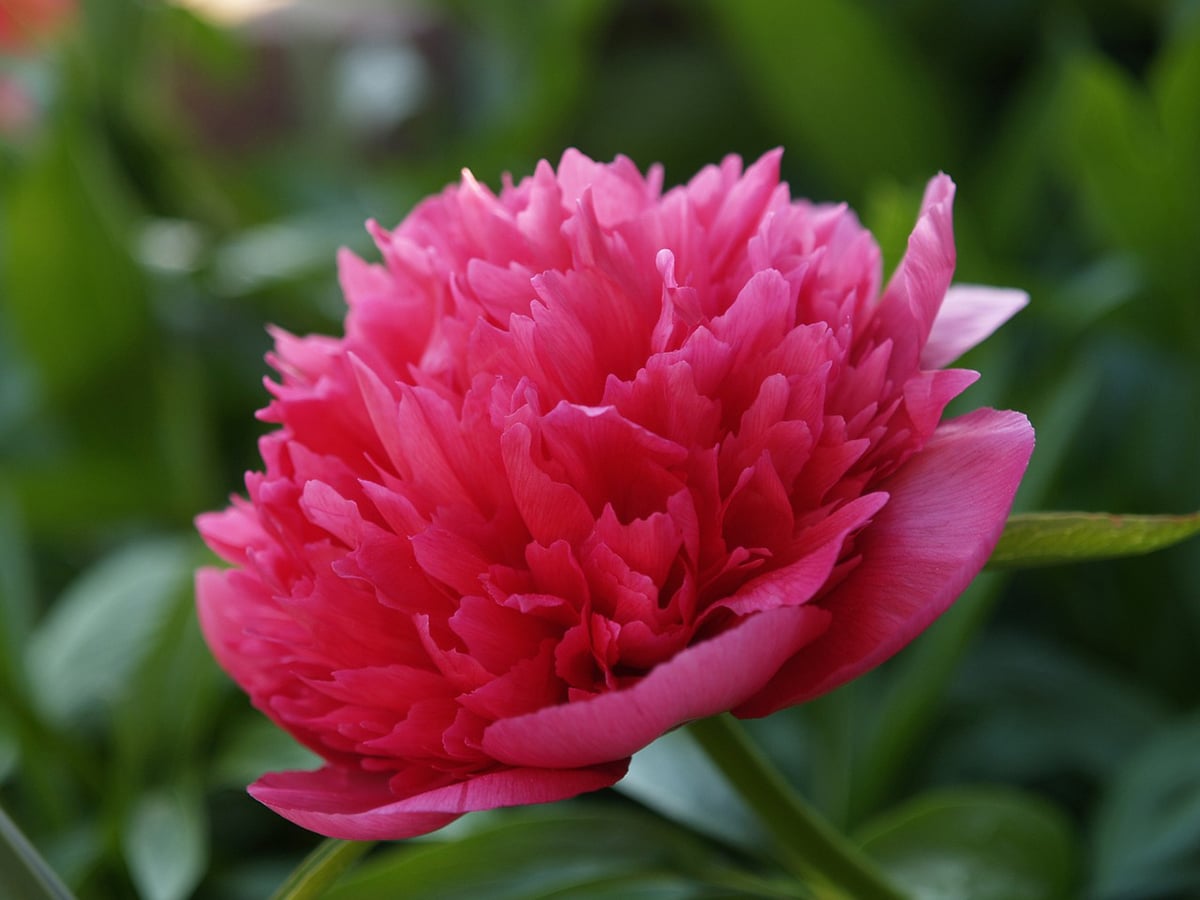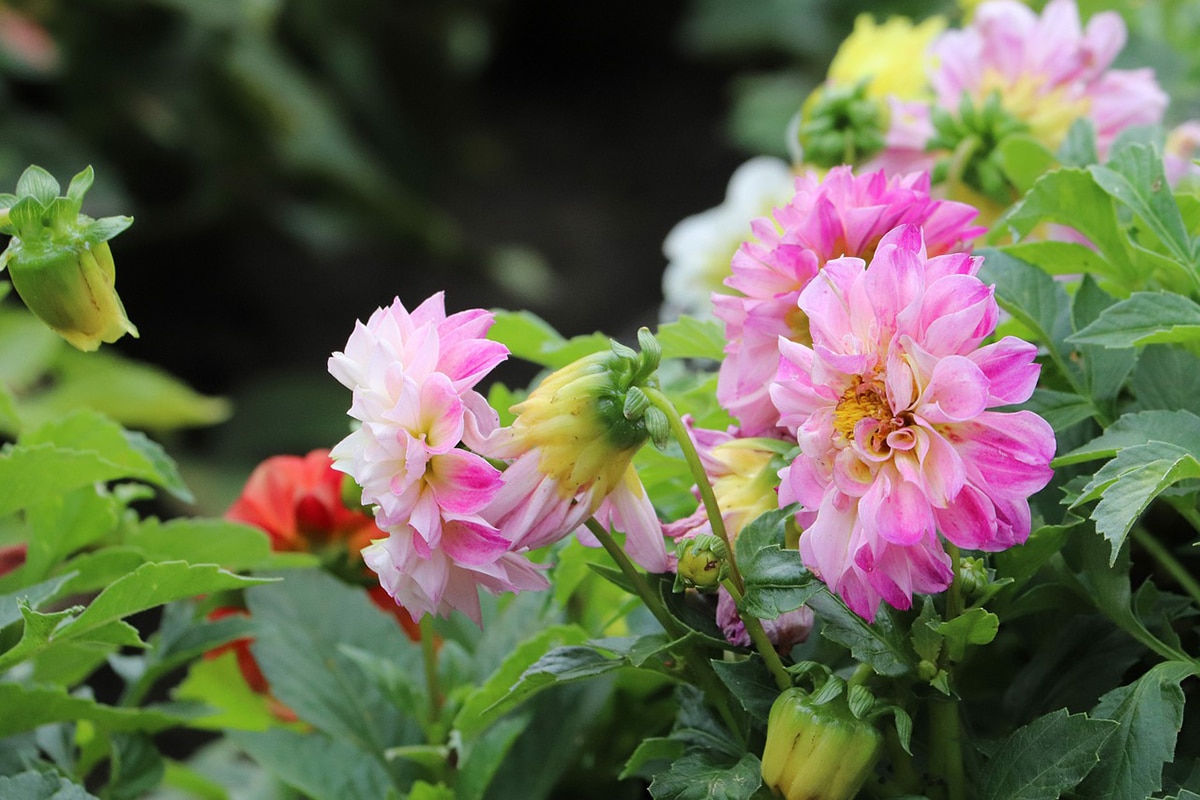
In the world of botany, an endless number of plants and their properties have been investigated. Today many vegetables are known that have a high contribution of benefits to our health. One of these plants is the Paeonia officinalis, a precious flower native to Europe. It has many active ingredients and chemical compounds that give it several healthy properties.
If you want to know more about the Paeonia officinalis, I recommend that you keep reading. We will explain what this flower is, giving a detailed description, what are its other most famous names in Spanish, what applications and properties it has and where we can find this vegetable. So pay attention, today it's time to meet another plant.
What is Peony and what is it for?

When we talk about Paeonia officinalis, we refer to a perennial and herbaceous plant belonging to the family paeoniaceae. It has a woody, underground rhizome and can reach a height of up to 70 centimeters. It is very rare that it exceeds this number. A little fun fact about this flower: It is the national flower of China.
The leaves of this vegetable are large. Those that are lower down, that is, the basal ones, are fully formed and petiolated. They have two to three divisions of between 17 and 30 lanceolate segments. They can be more or less lobed and the underside is pubescent. In addition, the petiole is very ribbed on the upper side. As for the upper leaves, these are usually smaller and less segmented, they could even be considered quite simple.
Regarding the flowers of the Paeonia officinalis, These are large, being able to reach a width of up to thirteen centimeters. They are shaped like a calyx and have arched sepals that lie above the upper leaves, and do not fall on top of them. They have between five and ten red petals with an oval but wide shape and a wavy edge. In addition, it has several stamens that in turn have several red filaments and yellow anthers. It should also be noted that they have two to three woolly carpels and that they are usually between three and five centimeters long. Regarding fruiting, the follicles have several seeds.
Common names for Paeonia officinalis
In the Spanish language there are many other names to refer to the Paeonia officinalis, this being the scientist. Who knows, you may have already heard of this flower. Next we will see a list of all the common names that this plant has in Spain:
- Chilli onion
- Churri onion
- Albardera rose
- Shitty rose
- Celonia
- Rose of alexandria
- Pentecost rose
- Coca
- cokes
- Rose of Santa Clara
- Rose of saint mary
- emapine
- Instep
- Lizard rose
- Mount rose
- Damn flower
- Lizard flower
- Squash
- Devil flower
- Cursed flower
- Realgar flowers
- Realgar Rose
- Scabies rose
- Chaste grass
- Santa Rosa grass
- Devil's rose
- Cursed rose
- Swelling
- Wild lily
- Lilies
- Peony
- Peony
- Wet rose
- Mountain rose
- Double flower peony
- Female peony
- Peronia
- Dog
- Peony
- Pionia
- Scrub pionia
- Eye burner
- Montesina rose
- Mountain rose
- Eye jump
- tufona
Uses and properties of Paeonia officinalis
Now that we can get an idea of what the Paeonia officinalis, we are going to comment a little on the properties of this plant and its applications. Among its many benefits, are those granted by the active principle paeonol that houses this vegetable:
- Analgesic
- Antacid
- antibacterial
- Anti-inflammatory
- Antiulcer
In addition, It has anthocyanosides that give it a vasoprotective and venotonic effect to Paeonia officinalis. It also has another chemical compound, called paeoniflorina, which provides other additional properties to this flower:
- Analgesic
- anticonvulsant
- Cough suppressant
- Hypnotic
- Sedative
- A little spasmolytic
The flowers of the Paeonia officinalis as lax-purgative. Instead, the seeds of the same plant fulfilled an emetic function. Nevertheless, these uses are not at all recommended today. In addition, it is completely contraindicated in cases of pregnancy, since it can have abortive effects, during lactation and in young children.
However, the Paeonia officinalis has many beneficial properties that They are indicated in cases of anxiety, gastritis, hemorrhoids, tachycardia, irritating cough, gastroduodenal ulcers and varicose veins. It's quite a profit bomb, right?
Where do peonies grow?

Regarding the distribution of the Paeonia officinalisThis It is found from the Mediterranean area to central Europe. It normally grows in grasslands and forests at the mountain level. We can also find this plant in melojares, which are basically lands and forests full of melojos.
Now that you know what the Paeonia officinalis and where it is located, you can see if you see it doing some mountainous route near the Mediterranean Sea. It is very gratifying to recognize different plants and know if they can be good or not when we are taking a walk in the middle of nature or doing a bit of hiking.